E-Bike Tips & Guides
Advanced Battery Care for Long-Lasting Electric Dirt Bike Rides
Master the art of battery maintenance with our expert electric dirt bike care guide. Discover charging tips, maintenance strategies, and insights for enduring performance and extended battery life.
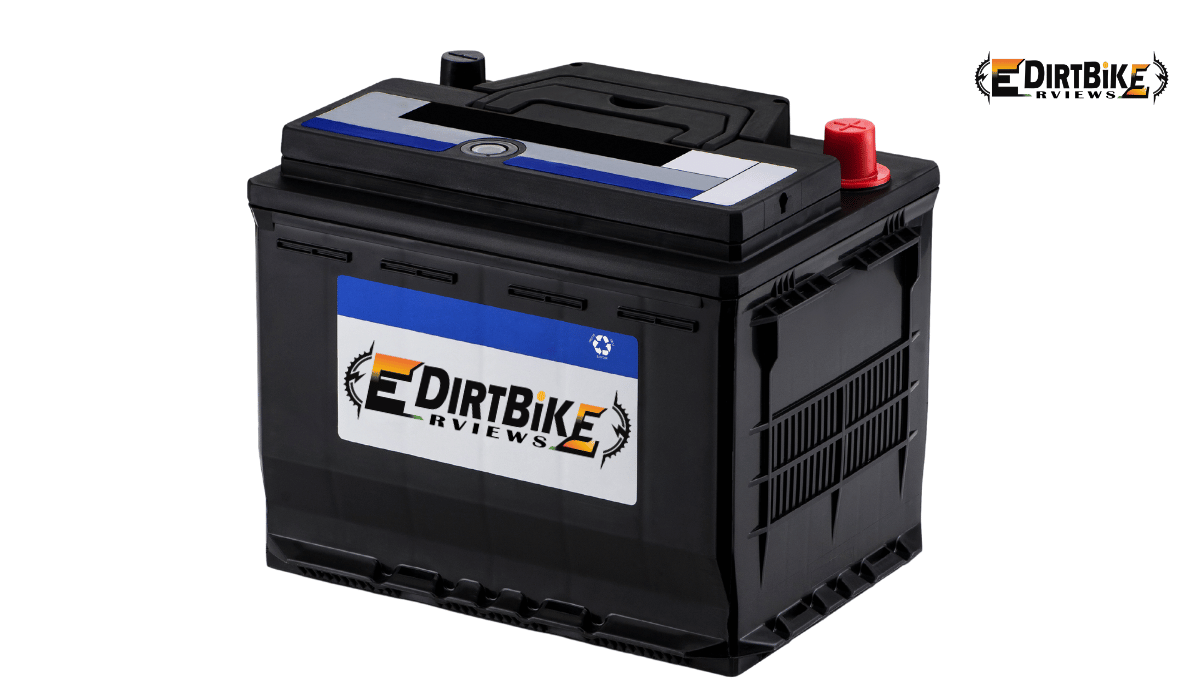
The heart of every electric dirt bike is its battery, a crucial component that dictates performance, endurance, and overall riding enjoyment. Understanding and maintaining the battery becomes paramount in electric dirt biking, where power and sustainability converge. This article delves into the nuances of advanced battery care, aiming to ensure long-lasting and exhilarating rides for electric dirt bike enthusiasts.
Table of Contents
Importance of Battery Care in Electric Dirt Biking
Battery care is fundamental in electric dirt biking for longevity, day-to-day performance, and reliability. A well-maintained battery ensures consistent power output, longer ride times, and an extended overall lifespan. Conversely, neglecting battery care can lead to reduced efficiency, shorter battery life, and ultimately increased costs due to premature battery replacement. For riders, this translates into maximizing their investment and enjoying uninterrupted adventures on the trails.
Overview of Electric Dirt Bike Battery Technology
Electric dirt bike batteries have evolved significantly, with most bikes now powered by lithium-ion (Li-ion) technology, known for its high energy density, lightweight properties, and efficiency. These batteries deliver the necessary power to tackle various terrains while supporting the bike’s eco-friendly nature. Understanding the technical aspects of these batteries, including their charging needs, energy management, and capacity retention, is critical to optimizing their performance and durability.
In conclusion, the significance of battery care in electric dirt biking cannot be overstated. With the proper knowledge and practices, riders can ensure their bikes are ready to face the challenges of the trail while safeguarding the environment. This article aims to equip electric dirt bike enthusiasts with the insights needed to care for their batteries effectively, ensuring a fusion of high performance, sustainability, and long-lasting enjoyment in their riding experiences.
Understanding Your Electric Dirt Bike Battery
Types of Batteries Used in Electric Dirt Bikes
Electric dirt bikes primarily use lithium-ion (Li-ion) batteries due to their advantageous characteristics. Li-ion batteries are preferred for their high energy density, providing a more extended range per charge than older battery types like lead-acid or nickel-metal hydride (NiMH). They are also lighter, which is critical for maintaining the bike’s agility and performance on the trail. Some high-end models might use lithium polymer (LiPo) batteries, offering higher energy densities and a more flexible form factor. However, they can be more expensive and require careful handling.
How Batteries Power Your Ride
The battery in an electric dirt bike acts as the fuel tank, storing electrical energy to be converted into mechanical power by the motor. When the rider accelerates, the battery delivers current to the motor, turning the wheels. The efficiency of this energy transfer dramatically depends on the battery’s condition and management system. Modern electric dirt bikes have sophisticated Battery Management Systems (BMS) that regulate power output, monitor battery health, and ensure safety by preventing overcharging and deep discharging.
Key Performance Indicators
Understanding electric dirt bike batteries’ key performance indicators (KPIs) is crucial for effective maintenance and usage. The main KPIs include:
- Capacity: Measured in watt-hours (Wh), it indicates the total energy stored in the battery. Higher capacity means longer riding time.
- Voltage: This determines the battery’s power output capability. Higher voltage can deliver more power to the motor, enhancing the bike’s performance.
- Cycles: A battery cycle is one full charge and discharge. The number of cycles a battery can handle before its capacity significantly decreases defines its lifespan.
- State of Health (SoH): This metric indicates the battery’s overall condition, reflecting its current capacity compared to its original state.
By understanding these aspects of electric dirt bike batteries, riders can make informed decisions about charging practices, maintenance schedules, and when it might be time to consider a replacement. Knowledge of battery types, how they function, and their performance metrics is fundamental for maximizing the enjoyment and longevity of electric dirt biking.
Optimal Charging Practices
Charging Do’s and Don’ts
Effective battery care starts with proper charging techniques. Here are some essential do’s and don’ts:
- Do’s:
- Use the manufacturer’s recommended charger: This ensures the correct voltage and current for your battery, reducing the risk of damage.
- Charge in a safe environment: Avoid extreme temperatures and ventilate the charging area.
- Monitor the charge: While modern chargers and batteries have safety cut-offs, checking the charging process periodically is wise.
- Disconnect when fully charged: Overcharging can lead to battery degradation, so unplug the battery once fully charged.
- Don’ts:
- Don’t expose the battery to extreme temperatures while charging: Extreme heat or cold can affect its ability to charge correctly and reduce lifespan.
- Don’t leave the battery depleted for prolonged periods: This can lead to a deep discharge state, which may be irreversible.
- Don’t charge immediately after riding: Allow the battery to cool down before charging to prevent heat buildup.
Best Practices for Extending Battery Life
Extending the lifespan of your electric dirt bike’s battery not only saves money but also ensures consistent performance:
- Maintain a moderate charge level: Keeping the battery between 20% and 80% charge can help extend its life. Avoid fully depleting or charging to 100% whenever possible.
- Store properly: If you won’t be using the bike for an extended period, store the battery in a cool, dry place at a 40% to 60% charge level.
- Regular use and charging: Batteries fare better when used and charged regularly rather than left idle.
Understanding Charging Cycles
A battery’s lifespan is often measured in charge cycles, with one cycle representing a full charge and discharge. However, this doesn’t necessarily mean charging from 0% to 100% and, for example, from 50% to 100% twice in one cycle. Batteries have limited cycles before capacity degrades, so understanding and optimizing your charging habits can significantly impact their longevity.
Balancing regular use with mindful charging practices helps maintain battery health and ensures your electric dirt bike is always ready for adventure. By adhering to these charging do’s and don’ts, adopting best practices for battery care, and understanding the nature of charging cycles, riders can enhance the performance and lifespan of their electric dirt bikes.
Daily and Seasonal Battery Maintenance
Routine Battery Check-ups
Regular inspections are crucial to maintaining the health and efficiency of your electric dirt bike’s battery. Daily check-ups should include verifying the charge level, ensuring the battery case and connectors are clean and free from debris or corrosion, and checking for any signs of wear or damage. Monitoring the battery’s temperature after rides can also provide insights into its functioning and whether it’s operating within safe limits. These daily checks can help identify potential issues early, preventing more significant problems.
Seasonal Maintenance Tips
Seasonal changes can affect battery performance and longevity, necessitating specific maintenance practices:
- Winter Care: Cold weather can severely impact battery efficiency. Store the battery in a relaxed, but not freezing, environment to prevent capacity loss. If riding in cold temperatures, keeping the battery insulated and allowing it to warm up to room temperature before charging can help maintain its health.
- Summer Care: High temperatures can lead to overheating and accelerated degradation. During hot months, store the bike and its battery in a cool, shaded place and avoid charging immediately after riding to allow the battery time to cool down.
Storage Recommendations
Proper storage of the electric dirt bike battery, especially during off-season periods, is crucial for preserving its lifespan:
- Short-term Storage: For a few weeks to a month, keep the battery charged to about 60% and store it in a cool, dry place away from direct sunlight or extreme temperatures.
- Long-term Storage: If storing the bike for several months, it’s recommended to charge the battery to 40%-60% and check the charge level every few months, recharging as necessary to prevent deep discharge.
By adhering to these routine and seasonal maintenance tips and storage recommendations, you can ensure that your electric dirt bike’s battery remains in optimal condition and ready to power your rides regardless of the season. Proper care will extend the battery’s life and enhance your overall riding experience.
Riding Strategies for Battery Efficiency
How Riding Style Affects Battery Life
Your riding style significantly impacts battery consumption and efficiency. Aggressive acceleration and high-speed riding drain the battery faster due to increased power demand. Conversely, maintaining a steady pace and gradual acceleration can help conserve battery life. Anticipating stops and using regenerative braking, if available on your electric dirt bike, can also recapture some energy and extend ride times.
Tips for Efficient Battery Use on the Trail
Maximizing battery efficiency while on the trail involves strategic riding and energy management. Here are some tips:
- Plan Your Route: Choose routes that match your battery’s range and consider the availability of charging points along the way.
- Manage Your Speed: Maintain a consistent speed that balances enjoyment with energy conservation. Avoid frequent stops and starts.
- Use Eco Modes: Many electric dirt bikes have eco modes that optimize battery usage. Utilize these settings in situations where maximum power isn’t necessary.
- Monitor Battery Usage: Check the battery’s state of charge and adjust your riding style accordingly to ensure you have enough power to complete your journey.
Weather and Terrain Considerations
Weather and terrain play critical roles in battery performance:
- Cold Weather: Batteries are less efficient in cold conditions, so plan shorter routes or ensure you have the means to recharge if necessary. Keeping the battery insulated can help maintain its temperature and efficiency.
- Hot Weather: Heat can increase battery degradation. Avoid charging immediately after riding in hot weather to allow the battery time to cool.
- Challenging Terrain: Riding on hilly or rough terrain requires more power. Be mindful of the extra demand on the battery and adjust your riding style and route planning to compensate.
Understanding how different factors affect battery life and applying efficient riding strategies can maximize your electric dirt bike’s range and performance. This enhances your riding experience and contributes to the battery’s longevity, ensuring many more exciting rides to come.
Troubleshooting Common Battery Issues
Identifying and Solving Battery Problems
Common electric dirt bike battery issues include decreased range, slow charging, and failure to hold a charge. Identifying these problems early can prevent more significant issues. For instance, check the charger and connections for damage or dirt if the battery is not charging correctly. A sudden decrease in range could indicate a cell imbalance or degradation, which might be resolved with a full charge and discharge cycle to recalibrate the battery’s management system.
When to Seek Professional Help
Some battery problems require professional diagnostics and repair, especially when dealing with complex internal issues like cell failure or electronic faults in the Battery Management System (BMS). If basic troubleshooting doesn’t resolve the problem, or if the battery shows signs of physical damage like swelling or leakage, it’s crucial to seek professional help. Using a damaged or malfunctioning battery can be dangerous and may damage the electric dirt bike further.
Keeping Your Bike’s Battery Healthy
Maintaining battery health involves regular monitoring and care:
- Regular Inspections: Check the battery regularly for signs of wear, damage, or unusual behavior.
- Balanced Charging: Use a quality charger that balances the cells during charging, as this can prolong battery life by ensuring all cells charge evenly.
- Avoid Extreme Conditions: Store and operate your bike in temperature-controlled environments to prevent battery stress.
- Follow Manufacturer’s Guidelines: Adhere to the charging and maintenance guidelines provided by the battery and bike manufacturer to ensure optimal performance and longevity.
By effectively troubleshooting common battery issues, seeking professional assistance when necessary, and adhering to best practices for battery care, you can ensure the health and longevity of your electric dirt bike’s battery. This proactive approach not only safeguards the battery but also enhances the overall performance and reliability of your electric dirt biking experience.
Personal Insights on Electric Dirt Biking and Battery Care
Experiences with Electric Dirt Bike Batteries
Over the years, my journey with electric dirt biking has been both exhilarating and educational. One key insight I’ve gained is battery care’s critical role in the overall riding experience. For instance, I once planned a long trail ride without fully considering the battery’s range limitations. I ended up stranded, which was a stark reminder of the importance of understanding and respecting the battery’s capabilities. This experience taught me the value of meticulous route planning and battery management, ensuring that I now always start with a full charge and a clear understanding of the battery’s range under various terrain and weather conditions.
Expert Opinion on Maintaining Battery Longevity
Maintaining battery longevity is about more than just extending ride times; it’s about preserving the heart of the electric dirt bike. Based on my experiences and research, here are a few principles I advocate for:
- Mindful Charging: Avoid pushing the battery to its extremes. Charging to 100% and depleting to 0% should be the exception, not the norm. Staying within 20-80% charge levels can significantly extend battery life.
- Temperature Awareness: Batteries are sensitive to temperature extremes. Storing and charging the bike in a temperature-controlled environment can prevent unnecessary stress and degradation.
- Regular Use and Maintenance: Batteries thrive on activity. Regular use and charging can help maintain their chemical integrity, preventing long-term storage or disuse issues.
From my perspective, understanding and caring for the electric dirt bike battery is akin to understanding and caring for the bike itself. Both require attention, respect, and knowledge to ensure peak performance and longevity. This holistic approach to battery care, coupled with a passion for electric dirt biking, has enhanced my riding experiences and deepened my appreciation for the intricate dance between man, machine, and nature.
Frequently Asked Questions (FAQs)
How do I keep my electric bike battery healthy?
To keep your electric dirt bike battery healthy, follow these tips:
- Regularly charge the battery, avoiding complete depletion.
- Store the battery in a cool, dry place away from extreme temperatures.
- Clean the battery and connectors to prevent corrosion.
- Use the manufacturer’s recommended charger and follow the charging guidelines.
How can I extend the life of my electric bike battery?
Extending the life of your battery involves:
- Avoid charging to 100% or depleting to 0% too frequently. Aim for a charge level between 20% and 80%.
- Keeping the battery at moderate temperatures, as extreme heat and cold can degrade its lifespan.
- Regular use and charging, as inactivity can lead to battery deterioration.
Should I charge my ebike battery after every ride?
Charging the battery after every ride is unnecessary, especially if it’s still within a good charge range (20-80%). However, if the charge is low or you plan to use the bike soon, charging it after riding is advisable. Always allow the battery to cool down before charging.
How long does an electric dirt bike battery last?
The lifespan of an electric dirt bike battery depends on the type and usage but typically ranges between 500 to 1,000 charge cycles. With proper care, a battery can last several years before needing replacement.
Can I replace the battery in my electric dirt bike?
Yes, batteries in electric dirt bikes can be replaced once they end their useful life. Purchasing a compatible battery from a bike manufacturer or a reputable supplier is essential to ensure optimal performance and safety.
Is it wrong to leave my electric dirt bike on the charger overnight?
Occasionally, leaving your bike on the charger overnight is generally not harmful, especially if the charger is designed to prevent overcharging. However, regularly overcharging can reduce the battery’s lifespan. It’s best to monitor the charging process and disconnect the charger once the battery is fully charged.
These FAQs cover essential aspects of electric dirt bike battery care, offering riders valuable insights into effectively maintaining their bike’s power source for long-lasting performance and reliability.
Conclusion
Recap of Battery Care Essentials
Proper battery care is the cornerstone of maintaining the performance and longevity of electric dirt bikes. Key takeaways include the importance of regular maintenance checks, optimal charging practices, and mindful storage to preserve battery health. Adhering to best practices such as avoiding extreme temperatures, maintaining a moderate charge level, and handling the battery with care can significantly extend its life. Understanding the technical aspects of battery management and practical riding strategies ensures both the rider’s enjoyment and the bike’s reliability.
The Future of Electric Dirt Biking and Battery Technology
The future of electric dirt biking looks promising, with advancements in battery technology continually improving. Innovations in battery composition, such as solid-state batteries, promise higher energy densities, faster charging times, and increased safety, which could revolutionize electric dirt biking. As these technologies mature, we can anticipate electric dirt bikes with longer ranges, reduced charging times, and enhanced performance.
Moreover, integrating innovative technology in battery management systems will likely offer more precise control over battery health and performance, further enriching the riding experience. The ongoing evolution in battery technology, coupled with a growing interest in sustainable and eco-friendly outdoor activities, positions electric dirt biking on a path of rapid growth and popularity.
In conclusion, the journey of electric dirt biking is as much about the thrill and connection with the outdoors as it is about embracing and caring for the technological heart that powers it. By prioritizing battery care and staying abreast of technological advances, riders can look forward to preserving their current ride and participating in the exciting future of electric dirt biking.
E-Bike Tips & Guides
Weather Impact on Electric Dirt Biking
Explore the dynamic between electric dirt bikes and varying weather conditions, including how temperature, rain, and terrain affect performance. Learn maintenance and riding tips for optimal biking experience.
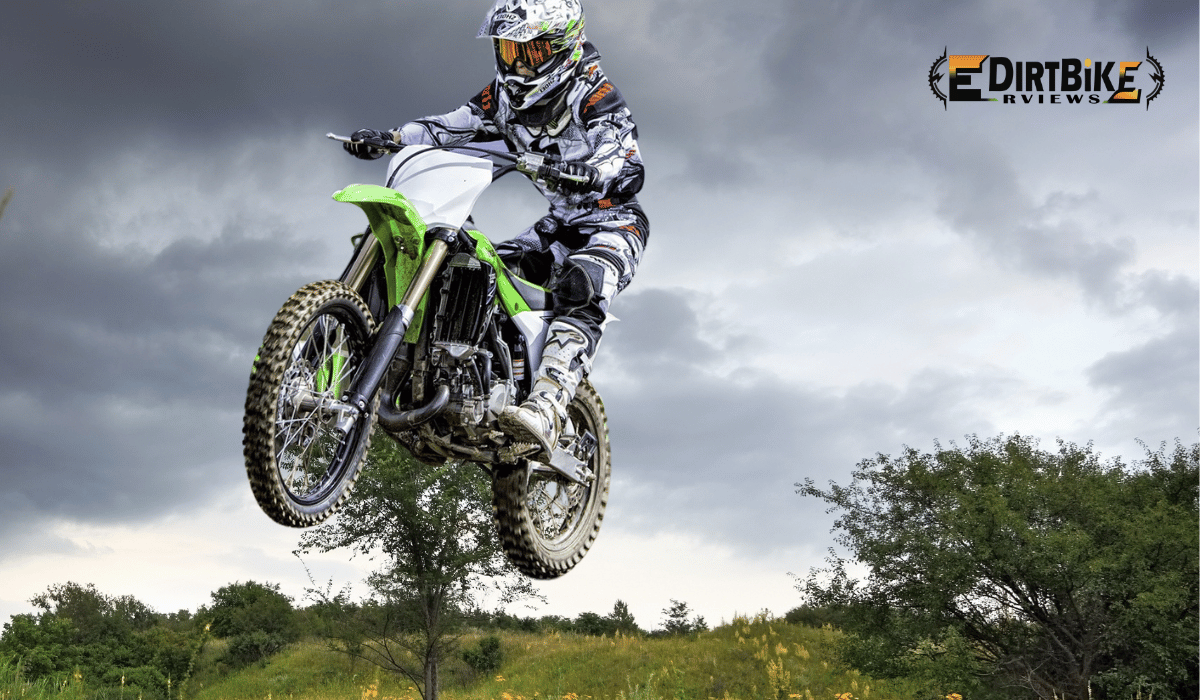

Understanding the impact of weather on electric dirt biking is crucial for both the safety and enjoyment of the rider, as well as for the longevity and performance of the bike. Weather conditions can dramatically affect the riding experience, from altering the bike’s handling and efficiency to challenging the rider’s skills and preparedness. For instance, wet conditions can affect traction and braking, while extreme temperatures can influence battery performance and bike reliability.
Moreover, as electric dirt bikes rely on electrical components and battery systems, they are susceptible to weather-related challenges unique to traditional bikes. Elements like rain, mud, snow, and extreme temperatures can significantly impact the electrical systems, battery life, and overall bike durability. Therefore, riders need to know how different weather conditions can affect their bike’s performance and how to prepare and respond to these challenges adequately.
Electric dirt biking is an exhilarating sport and a testament to the advancements in sustainable transportation. However, with this innovation comes the need to understand and adapt to how weather can influence the electric dirt biking experience. This knowledge ensures the rider’s safety and enjoyment and the optimal performance and longevity of their electric dirt bike.
Table of Contents
The Influence of Weather on Electric Dirt Bike Performance
Temperature Effects
Temperature fluctuations notably influence the performance of electric dirt bikes. Batteries, the powerhouse of these bikes, are sensitive to extreme temperatures. Battery capacity can decrease in cold conditions, reducing range and power output. The cold can cause the batteries to discharge more quickly and reduce efficiency. Conversely, in sweltering conditions, batteries can overheat, which may lead to thermal throttling, where the system reduces power output to prevent damage. This thermal effect can also accelerate battery degradation over time, affecting the long-term performance and reliability of the bike.
Rain and Water Exposure
Electric dirt bikes, like all electrical systems, have a degree of vulnerability to water. While many modern electric bikes are designed with waterproofing features to withstand typical wet conditions encountered off-road, prolonged exposure to water or riding in heavy rain can still pose risks. Water can penetrate seals and enclosures, potentially damaging the electrical components and battery. Furthermore, wet conditions can affect traction and braking, increasing the risk of accidents. Riders must understand their bike’s water resistance capabilities and take appropriate measures to protect it from excessive water exposure.
Wind Conditions
Wind can also impact the riding experience on an electric dirt bike, though the effects are more indirect than temperature and rain. Strong winds can make riding more challenging, especially in open or exposed areas, by affecting stability and rider control. Crosswinds can push the rider off course, requiring more effort to maintain balance and direction. Additionally, headwinds can cause increased energy consumption as the rider and bike work harder against the wind resistance, potentially reducing the bike’s range.
Terrain and Weather Interplay
The interplay between terrain and weather significantly affects electric dirt bike performance. Varied terrains like mud, sand, and snow can behave differently under various weather conditions, affecting traction and control. For example, mud can become more slippery and challenging to navigate after rain, requiring more power and battery usage to maintain speed and control. Snow and ice can reduce traction, necessitating careful handling to prevent accidents. The bike’s performance on these terrains, influenced by weather conditions, highlights the importance of understanding and adapting to the combined effects of weather and terrain for safe and efficient riding.
In conclusion, the performance of electric dirt bikes is considerably affected by weather conditions, including temperature variations, rain and water exposure, wind, and the complex interaction between terrain and weather. Riders must be aware of these factors and prepare accordingly to ensure their safety and the optimal functioning of their bikes in diverse weather conditions.
Electric Dirt Bike Design for Weather Adaptability
Waterproofing and Water Resistance
Manufacturers of electric dirt bikes prioritize waterproofing and water resistance in their designs to enhance the bikes’ adaptability to various weather conditions. Critical components such as the battery, motor, and control systems are encased in waterproof or water-resistant housings to prevent moisture ingress. Seals and gaskets are employed at junctures and openings to block water. At the same time, protective coatings on electrical circuits and connectors provide an additional defense against corrosion and short-circuiting. These design features ensure electric dirt bikes can withstand rain and wet terrain exposure, allowing riders to navigate through challenging conditions without compromising the bike’s performance or safety.
Temperature Management Systems
Electric dirt bikes are equipped with temperature management systems to address the challenges posed by temperature extremes. These systems are designed to maintain optimal battery and motor performance in hot and cold conditions. In cold weather, battery management systems (BMS) can include thermal insulation and heating mechanisms to prevent the battery’s temperature from dropping too low, thus preserving its efficiency and range. In contrast, for hot weather conditions, these systems often feature cooling technologies like air or liquid cooling to dissipate excess heat and prevent overheating. By regulating the temperature, these management systems protect the bike’s components, ensuring consistent performance and prolonging the lifespan of the battery and motor.
Durability in Various Weather Conditions
The overall durability of electric dirt bikes in diverse weather conditions is a critical consideration in their design. Materials used in the construction of the bike, such as frames, casings, and external components, are chosen for their strength, corrosion resistance, and ability to withstand environmental stress. This includes using alloys and plastics that resist rust and decay when exposed to moisture, mud, or salt. The design also considers the impact of UV radiation, ensuring that materials do not degrade quickly when exposed to sunlight for prolonged periods. These design choices ensure that electric dirt bikes remain robust and reliable, whether ridden in scorching heat, cold, or during torrential rains.
In conclusion, the design of electric dirt bikes for weather adaptability focuses on waterproofing, temperature management, and overall durability. These features collectively ensure that the bikes can withstand and perform optimally in various weather conditions, providing riders with confidence in the reliability and safety of their electric dirt bikes regardless of the environmental challenges they face.
Riding Strategies in Different Weather Conditions
Tips for Wet Conditions
Riding an electric dirt bike in wet conditions requires careful preparation and technique. Firstly, riders should ensure their bike’s waterproofing is up to standard to prevent water-related damage. When navigating wet terrain, reducing speed and using gentle, smooth inputs for throttle, brakes, and steering can help maintain control and prevent skidding or sliding. Avoiding deep puddles or streams where water could submerge critical components is also essential. Tires with appropriate tread patterns can enhance grip in slippery conditions, and riders should wear waterproof gear to stay dry and focused.
Handling Cold Weather Riding
Cold weather can significantly impact battery performance and rider comfort. Riders should store their electric dirt bike in a temperature-controlled environment to maximize battery life and efficiency when not in use. Pre-warming the battery before riding can also help. On the trail, conserving battery power by maintaining a steady pace and avoiding unnecessary acceleration is wise. Dressing in layers with thermal and windproof clothing will keep the rider warm and reduce the cold’s impact on performance and endurance.
Strategies for Windy Conditions
In windy conditions, the key is to reduce the bike’s profile against the wind and maintain stability. Leaning slightly into the wind can help counteract its force. Riders should be prepared for sudden gusts, keeping a relaxed grip on the handlebars to allow quick adjustments. Reducing speed and avoiding risky maneuvers is also advisable, as wind can unpredictably affect the bike’s path. Choosing routes sheltered from the wind, when possible, can make for a more enjoyable and less exhausting ride.
Adapting to Changing Terrains
Electric dirt bikes must handle a variety of terrains, which can change rapidly with the weather. Riders should be observant and ready to adjust their riding style accordingly. For instance, it may be necessary to shift weight rearward to improve traction in muddy or sandy conditions. On rocky or uneven terrain, standing on the pegs can help absorb shocks and give better control. It’s crucial to continuously assess the terrain and adjust speed, riding position, and bike settings (like suspension and power delivery) to safely and effectively navigate different landscapes.
In conclusion, riding an electric dirt bike in varying weather conditions demands adaptability and skill. By employing strategies tailored to wet, cold, and windy environments and being prepared to adjust to changing terrains, riders can enhance their experience and ensure both their safety and the longevity of their bike.
Maintenance and Care for Electric Dirt Bikes in Varied Climates
Routine Checks and Maintenance
Regular maintenance is essential for electric dirt bikes’ optimal performance and longevity, especially when ridden in varied climates. Routine checks should include inspecting the battery’s charge level and health, ensuring all electrical connections are secure and corrosion-free, and verifying that the motor and controller are functioning correctly. Mechanical components like brakes, suspension, and tires also need regular inspection for wear and proper operation. It’s essential to follow the manufacturer’s recommended service intervals and to promptly address any issues to prevent minor problems from escalating into significant failures.
Post-Ride Care in Adverse Weather
After riding in rain, snow, or dusty conditions, cleaning the bike properly is crucial to remove any debris, moisture, or corrosive substances that could damage its components. Start by gently rinsing the bike to wash away mud and grime, avoiding direct water spray on sensitive electrical parts. To prevent moisture-related issues, dry the bike thoroughly, especially around electrical connections and battery compartments. Lubricating moving parts, such as the chain and suspension pivots, can help protect them from rust and wear. Inspecting the bike for any damage caused by exposure to harsh conditions should be part of the post-ride care routine.
Long-term Storage and Weather Considerations
When storing an electric dirt bike for extended periods, particularly in regions with extreme weather, it’s essential to consider the environment’s impact on the bike’s components. The battery should be stored at a moderate temperature and charged to the level recommended by the manufacturer to maintain its health. The storage area should be dry and free from extreme temperature fluctuations to prevent damage to the bike’s electrical and mechanical systems. Covering the motorcycle with a breathable, waterproof cover can protect it from dust and moisture. Additionally, periodic checks during storage can help ensure that the bike remains in good condition and is ready to perform reliably when next used.
In summary, maintaining and caring for an electric dirt bike in varied climates involves routine checks, diligent post-ride care, and proper storage practices. These efforts help to ensure the bike’s reliability, performance, and longevity, enabling riders to enjoy their electric dirt biking experience in any weather condition.
Personal Insights on Electric Dirt Biking
Unique Experiences and Observations
Having spent considerable time navigating diverse terrains and weather conditions on electric dirt bikes, I’ve observed their remarkable evolution and adaptation to the off-road environment. One standout experience was riding through a dense forest trail after a heavy rainstorm. The silent operation of the electric motor allowed me to immerse fully in the natural surroundings, a stark contrast to the noise of a gas-powered bike. The bike’s instant torque and smooth power delivery were exceptional, providing precise control through slippery sections and over wet leaves, showcasing the synergy between technology and nature.
Expert Opinion on Electric Dirt Bike Performance in Various Weathers
From a performance perspective, electric dirt bikes exhibit unique strengths and vulnerabilities across different weather conditions. I noticed a decreased battery range in cold weather, highlighting the importance of thermal management systems that can maintain battery efficiency. However, the low-end torque of electric motors is a boon in snowy or muddy conditions, offering controlled power output that helps maintain traction.
In wet conditions, the reduced noise and absence of exhaust emissions of electric bikes enhance the riding experience, though the importance of waterproofing becomes evident to protect the electrical components. During hot weather rides, the absence of a heat-emitting engine makes electric dirt bikes more comfortable, though attention must be paid to preventing battery overheating.
Electric dirt bikes also excel in windy conditions, where their lower center of gravity and stable handling inspire rider confidence. The ability to adjust power settings on the fly allows for a tailored riding experience, responding dynamically to the challenges of gusty winds.
In conclusion, my experiences with electric dirt biking have affirmed their potential to transform off-road riding. Their performance in various weather conditions, combined with the environmental benefits, positions them as a compelling choice for the future of the sport. While there are challenges related to weather impacts on battery life and electrical systems, ongoing technological advancements continue to enhance their resilience and capability, making electric dirt bikes increasingly viable and enjoyable under diverse environmental conditions.
Frequently Asked Questions (FAQs)
Does rain affect electric bikes?
Rain can affect electric dirt bikes, especially if they are not waterproofed. Modern electric bikes are generally designed to handle light to moderate rain without damage to the electrical components, thanks to protective casings and seals. However, prolonged exposure to heavy rain or submersion in water can lead to potential risks like short-circuiting or corrosion. It’s essential to check the manufacturer’s guidelines on the bike’s water resistance and take precautions during wet conditions.
How cold is too cold for Ebikes?
Electric dirt bikes can operate in cold weather, but their performance may diminish below freezing (0°C or 32°F). Extreme cold can reduce battery efficiency and capacity, leading to shorter ride times and decreased power. To mitigate cold weather effects, it is advisable to store the bike in a warmer environment when not in use and use thermal insulation for the battery, if available. Generally, temperatures below -10°C (14°F) are challenging for electric bikes and could warrant special considerations for battery care and bike operation.
Do electric bikes work in the snow?
Yes, electric dirt bikes can work in the snow, provided they have the appropriate tires and the rider has the necessary skills. The key is to maintain traction and control in slippery conditions. Fat tires with deep treads benefit snow riding, providing better grip. However, extreme cold and wet conditions can affect battery performance and risk damage to the electrical system, so it’s crucial to ensure the bike is suitably equipped and maintained for snowy conditions.
Can heat affect electric dirt bike performance?
Yes, high temperatures can cause the battery to overheat, reducing efficiency and potential damage. Cooling systems and proper thermal management are essential to maintaining performance in hot weather.
Are electric dirt bikes suitable for all seasons?
Electric dirt bikes can be ideal for all seasons, but their performance and maintenance needs vary with the weather. Riders must adapt to seasonal conditions, ensuring their motorcycle is appropriately prepared and maintained for optimal performance year-round.
How can I protect my electric dirt bike from weather-related wear and tear?
Regular maintenance, proper storage, and using weather-appropriate protective gear for your bike, such as covers and guards, can help protect it from weather-related wear and tear. Following the manufacturer’s guidelines for care and maintenance is also crucial.
These FAQs underscore the importance of understanding the interplay between weather conditions and electric dirt bike performance. They emphasize proper preparation and maintenance to ensure a safe and enjoyable riding experience.
Conclusion
Throughout this comprehensive exploration, we have delved into the significant impact of weather conditions on electric dirt biking, scrutinizing how elements like temperature, rain, wind, and terrain interact with these innovative machines. We’ve learned that electric dirt bikes are designed with weather adaptability in mind, featuring waterproofing, temperature management systems, and robust durability. However, they still require mindful riding strategies and maintenance to navigate varied climates successfully.
Electric dirt bikes offer a sustainable and exhilarating off-road experience, with technological advancements enhancing their performance and reliability in different weather scenarios. From wet and muddy trails to cold, windy, or hot conditions, these bikes have proven capable of handling diverse environmental challenges, albeit with considerations for battery life and component protection.
Electric dirt bikes are a testament to the progress in off-road motorcycling, marrying eco-friendliness with performance. Their resilience against weather challenges, coupled with the proper care and handling, ensures they are a novelty and a viable and sustainable option for enthusiasts and professionals alike. As technology continues to evolve, the future of electric dirt biking looks promising, offering riders the thrill of the ride while minimizing environmental impact.
E-Bike Tips & Guides
Choosing the Right Tires for Your Electric Dirt Bike
With our expert guide, master the art of selecting the perfect tires for your electric dirt bike. Discover how the right tires enhance every ride’s performance, safety, and enjoyment.
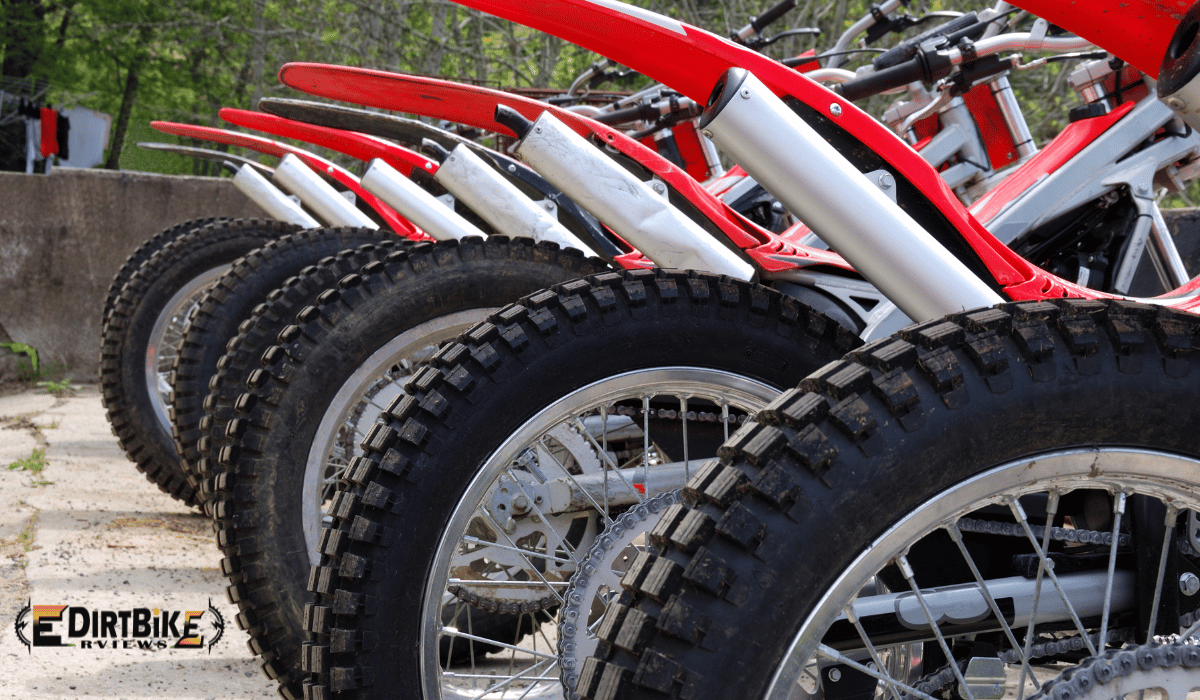

Choosing the right tires for your electric dirt bike is a decision that significantly influences both performance and safety. Tires are the sole contact point between the bike and the ground, playing a pivotal role in how the bike handles various terrains, responds to rider inputs, and performs under different riding conditions. This selection process becomes even more critical with electric dirt bikes, where the unique characteristics of electric power delivery can affect tire wear and performance.
Table of Contents
Selecting the Right Tires for Electric Dirt Bikes
The right tires can transform the riding experience, offering improved traction, stability, and confidence on the trail. Electric dirt bikes, known for their instant torque and consistent power output, require tires that can handle the immediate force and provide adequate grip to efficiently transfer this power into forward motion. The selection is not just about the tire’s ability to endure the power but also its compatibility with the bike’s design and the rider’s style, ensuring that the bike’s capabilities are fully utilized.
Impact of Tires on Performance and Safety
The impact of tires on an electric dirt bike’s performance is profound. Well-chosen tires enhance handling, allowing for sharper turns, better control of technical sections, and more effective braking. They can also reduce the risk of slippage and accidents, particularly in challenging weather or rugged terrain, safeguarding the rider. On the safety front, the right tires lessen the wear on the bike’s components, promote longer battery life by requiring less power to overcome rolling resistance, and generally contribute to a more stable and predictable ride.
Selecting the right tires for an electric dirt bike is crucial to ensuring optimal performance and safety. The choice should be informed by understanding how different tires interact with electric bike dynamics, the intended riding environment, and the rider’s preferences and skills. With the appropriate tires, riders can maximize their enjoyment and control, making every ride safer and more satisfying.
Understanding Tire Basics
Types of Dirt Bike Tires and Their Characteristics
Dirt bike tires come in various types, each designed to perform best under specific conditions:
- Knobby Tires: Characterized by large, spaced-out knobs, these tires offer excellent traction on soft, muddy, or loose surfaces. The knobs dig into the terrain, providing a grip that is essential for off-road riding.
- Intermediate Tires: These are the all-rounders of dirt bike tires, featuring medium-sized knobs with closer spacing. They perform well on various terrains, from soft dirt to hard-packed trails.
- Hard Terrain Tires: Designed for riding on hard, rocky, or compacted surfaces, these tires have smaller, tightly spaced knobs. They offer a larger contact area with the ground, enhancing grip on hard surfaces.
Tire Size and Its Implications for Riding
The size of the tire, typically denoted by width and diameter measurements, affects the bike’s handling and performance. Larger tires may provide better traction and stability due to a larger contact patch with the ground but can also increase rolling resistance, affecting acceleration and battery efficiency. Conversely, smaller tires might offer quicker handling and less rolling resistance but could reduce stability and traction.
Tread Patterns and Terrain Compatibility
The tread pattern on a dirt bike tire plays a crucial role in determining its suitability for different terrains:
- Mud Treads: Designed with wide-spaced, large knobs to prevent mud from clogging, these treads are ideal for wet and muddy conditions, allowing the tire to penetrate the surface and find traction.
- Sand Treads: These tires have a paddle-like design, optimal for loose, sandy terrains where the wide-spaced knobs help in creating a scooping action for better propulsion.
- Rocky Treads: Featuring smaller, closer-spaced knobs and often made of more complex rubber compounds, these tires are designed to grip onto rocky surfaces and resist puncture or damage from sharp edges.
In summary, understanding the basics of dirt bike tires, including the types, sizes, and tread patterns, is essential for selecting the right tire for your electric dirt bike. The choice should align with the typical riding conditions and personal riding style to ensure optimal trail performance, safety, and enjoyment.
Special Considerations for Electric Dirt Bikes
How Electric Dirt Bike Performance Influences Tire Choice
Electric dirt bikes exhibit characteristics that distinctly influence tire selection. Electric motors’ instant torque and continuous power delivery can lead to faster tire wear, especially if the tires are not designed to handle such forces. The acceleration characteristics of electric bikes mean that tires need to have excellent traction to prevent slipping and to utilize the motor’s power effectively. Additionally, since electric dirt bikes often have a heavier build due to the battery, choosing tires that can support the additional weight without compromising performance is crucial.
Durability and Wear Considerations for Electric Bikes
The durability of tires on electric dirt bikes is a significant consideration due to the unique demands of electric propulsion. Tires must be robust enough to withstand the constant torque and be made of compounds that resist wear from the electric motor’s immediate power output. The regenerative braking standard in electric dirt bikes also affects tire wear patterns, potentially causing the rear tire to wear down differently than on a gas-powered motorcycle. Therefore, when selecting tires for an electric dirt bike, it’s essential to consider those explicitly designed for electric or high-performance vehicles, as they are more likely to offer the durability and wear characteristics suited to the bike’s performance profile.
In summary, the performance attributes of electric dirt bikes require careful consideration when choosing tires. The right tires for an electric dirt bike should accommodate the machine’s power and weight and offer durability and wear characteristics that align with the unique aspects of electric biking. This careful selection ensures sustained performance and enhances the overall riding experience.
Selecting Tires for Different Riding Conditions
Tires for Muddy and Wet Conditions
When riding an electric dirt bike in muddy and wet conditions, tires with deep, wide-spaced knobs are ideal. These tread patterns help clear mud quickly and prevent the tire from clogging, maintaining traction in slippery conditions. The knobs’ depth ensures that the tire can penetrate the surface layer of mud to reach firmer ground beneath, providing better grip. Tires designed for wet conditions often have softer rubber compounds to enhance grip on slick surfaces.
Tires for Sandy or Loose Terrain
In sandy or loose terrain, where flotation and stability are critical, tires with a broader profile and flexible knobs are preferable. These features allow the tire to float over the sand rather than digging in, preventing the bike from bogging down. The flexible knobs adapt to the shifting sands, providing a larger contact area and improving traction. The tire’s construction should be durable enough to withstand the abrasive nature of sand, which can quickly wear down the tread.
Tires for Rocky or Hard-Packed Trails
Riding on rocky or hard-packed trails requires tires with solid sidewalls and dense, less pronounced tread patterns. These characteristics prevent punctures from sharp rocks and provide a stable ride on hard surfaces. The tread should offer enough grip to handle the terrain’s irregularities while being smooth enough to maintain contact with the ground. Hard compound tires are typically used in these conditions as they are more resistant to wear and tear and provide better stability at higher speeds.
In conclusion, selecting the right tires for specific riding conditions is crucial for enhancing the performance and safety of an electric dirt bike. To ensure optimal traction, stability, and durability, the tire choice should be based on the terrain’s nature, whether muddy, sandy, or rocky. By matching the tires to the expected riding conditions, riders can maximize their electric dirt bike’s capabilities and enjoy a safer, more satisfying experience on the trails.
Maintenance and Care for Dirt Bike Tires
Regular Inspection and Maintenance Routines
Proper tire maintenance is essential for ensuring the safety and performance of your electric dirt bike. Regular inspections should be part of your maintenance routine. Check for signs of wear, such as tread depth reduction, and look for damage like cuts, punctures, or embedded objects. Tire pressure should be checked before each ride, as incorrect pressure can affect the bike’s handling, increase tire wear, and potentially lead to tire failure.
Rotating the tires periodically can promote even wear, especially if one tire tends to wear down faster than the other due to the bike’s weight distribution or riding style. Cleaning the tires and removing debris from the treads after rides can also extend their life and prevent premature wear.
When to Replace Your Dirt Bike Tires
Knowing when to replace your dirt bike tires is crucial for maintaining optimal performance and safety. Key indicators for replacement include:
- Tread Wear: If the tread depth exceeds the manufacturer’s recommended limit, it’s time for a new tire. Worn treads compromise the tire’s grip and can significantly affect the bike’s handling, especially in adverse conditions.
- Age and Condition: Over time, tires degrade due to exposure to elements, even if they’re not used frequently. Cracks, hardening, or noticeable performance decline are signs that the tires need replacing.
- Damage: Any signs of severe damage, like deep cuts, punctures, or sidewall bulges, indicate that a tire needs to be replaced immediately to avoid the risk of blowouts or accidents.
Regular maintenance and timely tire replacement are vital for ensuring the performance and safety of your electric dirt bike. By keeping a close eye on the condition of your tires and addressing any issues promptly, you can enjoy a reliable and safe riding experience.
Personal Insights on Tire Selection for Electric Dirt Bikes
Experiences with Different Tires in Various Conditions
Through years of riding and testing various electric dirt bikes, I’ve learned that tire selection can dramatically alter the bike’s performance and the rider’s experience. For instance, while navigating muddy trails, tires with aggressive tread patterns provided the necessary grip to power through without getting stuck. In contrast, when riding on sandy dunes, wider tires with a paddle-like design offered the flotation needed to glide over the surface rather than digging in.
One particular experience that stands out was riding with a set of high-performance tires on rocky terrain. The tires’ reinforced sidewalls and specific tread design provided exceptional stability and traction, making a noticeable difference in handling sharp rocks and hard-packed paths. This experience underscored the importance of choosing tires specifically designed for the terrain and conditions of the ride.
Recommendations Based on Riding Style and Bike Specifications
Selecting the right tires for your electric dirt bike involves considering your riding style and the bike’s specifications. Tires with durable construction and aggressive tread patterns are essential for aggressive riders who push their bikes to the limits on challenging terrains. These riders should look for tires that can withstand high torque and provide excellent traction in various conditions.
Conversely, a less aggressive tread pattern might be more appropriate for casual riders or those using their bikes primarily on smooth trails, offering a balance between grip and riding comfort. Additionally, the weight and power output of the electric dirt bike should influence tire choice. Heavier and more powerful bikes require tires that can handle the extra load and power, emphasizing the need for durability and robustness.
In conclusion, my experiences have taught me that there is no one-size-fits-all answer to tire selection for electric dirt bikes. Instead, the best choice depends on careful consideration of the riding conditions, personal riding style, and the bike’s specific capabilities and characteristics. With the right tires, riders can enhance the performance and enjoyment of their electric dirt biking adventures.
Frequently Asked Questions (FAQs)
What size tires are best for an electric dirt bike?
The best tire size for an electric dirt bike depends on the bike’s design, intended use, and rider preference. Generally, larger tires provide better stability and are more capable of handling various terrains, making them suitable for off-road conditions. However, smaller tires might offer more agility and faster acceleration. When selecting tire size, it’s essential to refer to the bike manufacturer’s recommendations and consider the type of terrain you plan to ride on.
Do e-bikes require special tires?
While electric dirt bikes don’t necessarily require special tires, it’s advisable to choose tires that can withstand the unique demands of electric propulsion, such as instant torque and increased weight. Tires designed for electric bikes often have reinforced structures to handle the additional stress and provide better durability and performance.
Do I need ebike-specific tires?
Using ebike-specific tires can be beneficial due to their optimized design for electric bikes’ weight and power output. These tires usually feature more durable materials and construction to cope with electric dirt bikes’ higher torque and speeds. While not mandatory, ebike-specific tires can enhance the performance and safety of your ride.
How often should I replace the tires on my electric dirt bike?
Tire replacement frequency on an electric dirt bike depends on usage, terrain, and tire quality. Regularly inspect your tires for wear and damage, and replace them when the tread depth is below the recommended level or if there are signs of significant wear, damage, or aging. Active riders might need to replace their tires once a season or more, depending on the riding conditions.
These FAQs cover the essential aspects of tire selection and maintenance for electric dirt bikes, guiding riders in making informed decisions to optimize their bike’s performance and safety.
Conclusion
Choosing the right tires for an electric dirt bike is a critical decision that significantly impacts the bike’s performance, safety, and overall riding experience. This comprehensive discussion has highlighted the factors riders must consider, including tire size, tread pattern, terrain compatibility, and whether to opt for e-bike-specific tires.
Recap of Key Points on Choosing the Right Tires
- Tire Size and Type: Selecting the appropriate size and type of tire for your electric dirt bike is essential for optimal performance and handling. Your choices will vary based on terrain and your personal riding style.
- Tread Patterns: The tread pattern should match the riding conditions you most frequently encounter, whether mud, sand, rocky trails or hard-packed dirt paths.
- Durability and Performance: Considering the unique demands of electric dirt bikes, such as higher torque and potentially heavier weights, it’s advisable to choose tires with enhanced durability and performance.
The Significance of Tire Selection in Enhancing the Electric Dirt Biking Experience
The right tires can transform an electric dirt bike ride from good to exceptional. They ensure better traction, improved stability, and a safer riding experience, allowing riders to fully exploit their electric bikes’ capabilities. The silence and power of electric dirt biking, combined with the perfect tire choice, can elevate the adventure, allowing riders to confidently tackle diverse terrains and enjoy the journey to its fullest.
In summary, tire selection is a fundamental aspect of electric dirt bike preparation that should not be overlooked. With the right tires, riders can enhance their electric dirt biking experience, ensuring each ride is as thrilling, safe, and satisfying as possible. By understanding and applying this article’s insights, riders can make informed decisions that optimize their bike’s performance and suit their riding preferences.
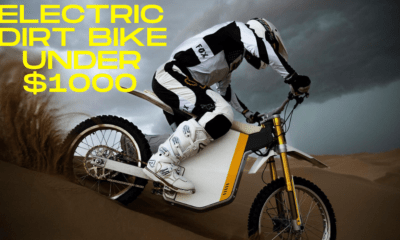
 Electric Dirt Bike For Kids2 years ago
Electric Dirt Bike For Kids2 years agoElectric Dirt Bikes Under $1000: Your Ultimate Guide to Affordable Off-Road Adventure
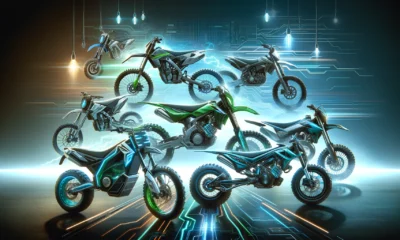
 Electric Dirt Bike For Adults2 years ago
Electric Dirt Bike For Adults2 years agoTop 11 Electric Dirt Bikes for Adults in 2024: Unleashing the Future of Off-Road Adventure
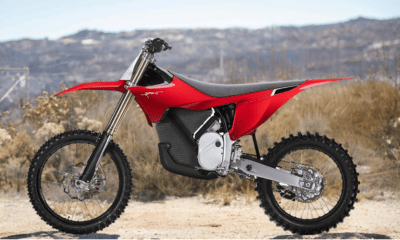
 Electric Dirt Bike For Adults2 years ago
Electric Dirt Bike For Adults2 years agoUnleashing Power and Innovation: The Stark Varg Electric Dirt Bike Reviewed
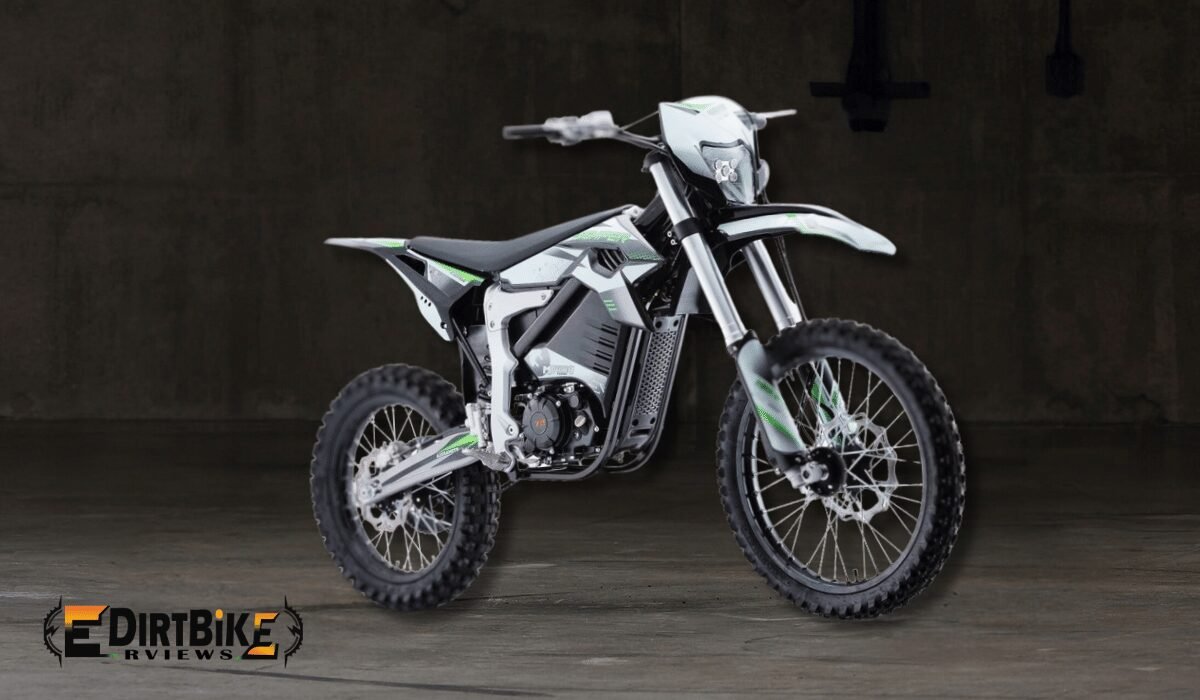
 Electric Dirt Bike For Adults2 years ago
Electric Dirt Bike For Adults2 years agoUnleashing the Thrill: MotoTec Venom 72V 12000W Electric Dirt Bike Review
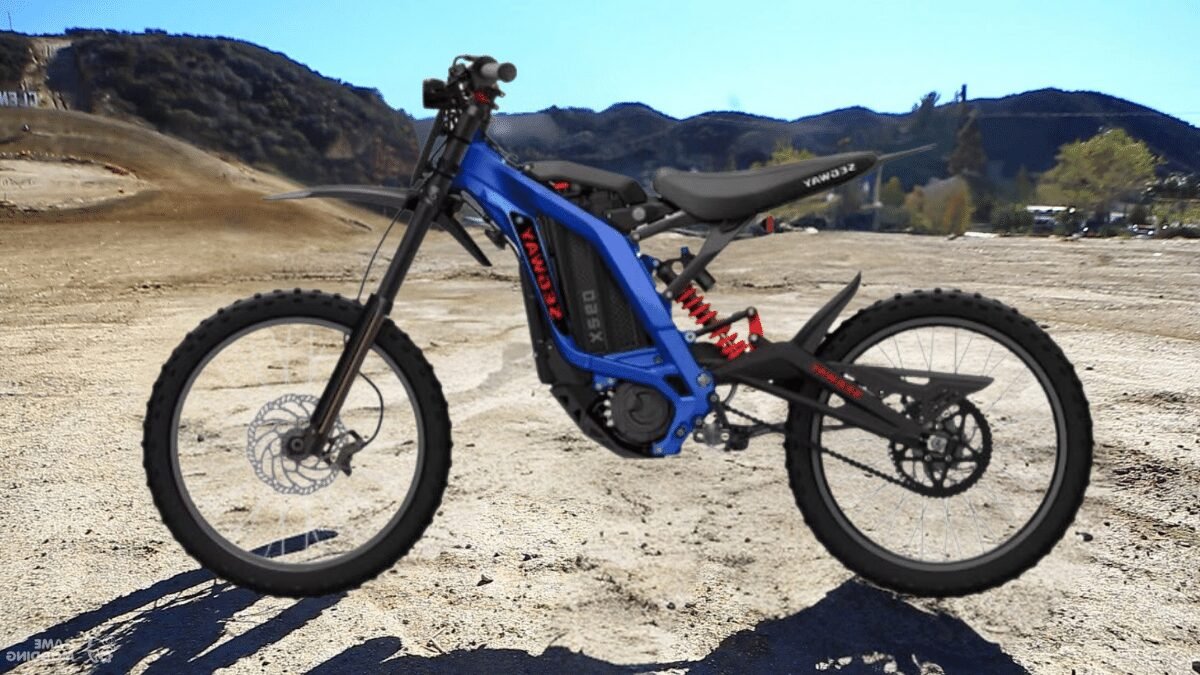
 Electric Dirt Bike For Adults2 years ago
Electric Dirt Bike For Adults2 years agoUnveiling the Segway Dirt eBike X260: Power, Performance, and Adventure
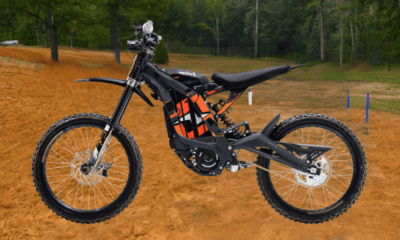
 Electric Dirt Bike For Adults2 years ago
Electric Dirt Bike For Adults2 years agoConquering Trails with the Sur-Ron Light Bee X: A Comprehensive Review
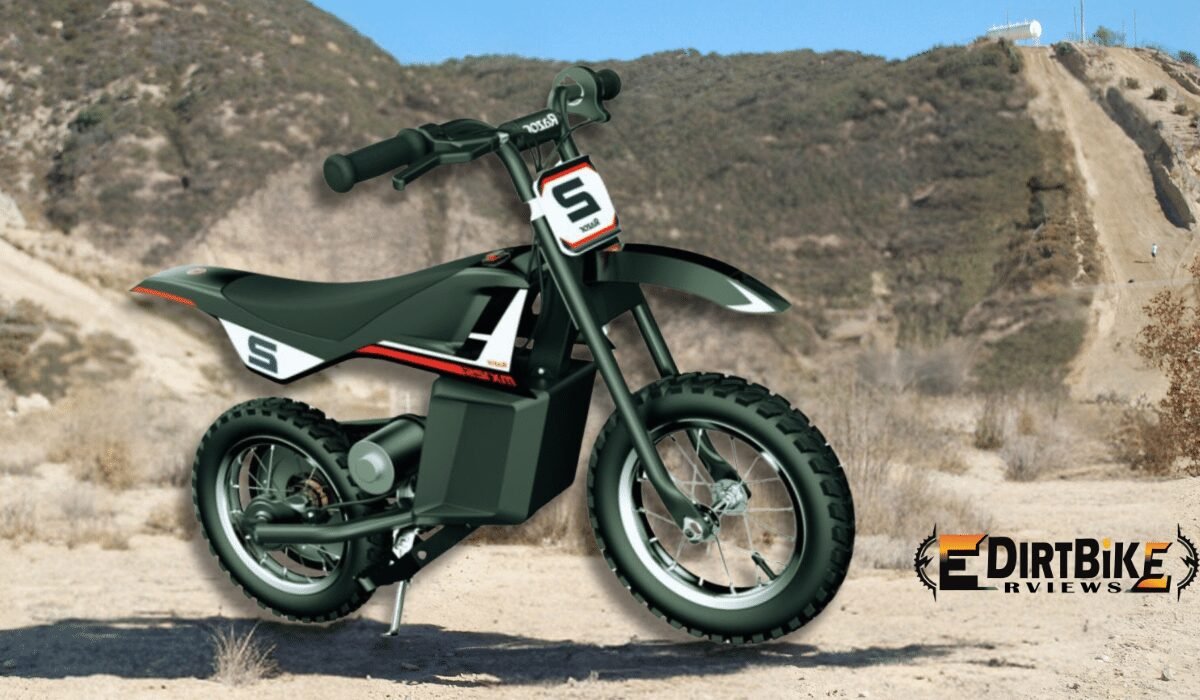
 Electric Dirt Bike For Kids2 years ago
Electric Dirt Bike For Kids2 years agoRazor MX125 Electric Dirt Bike Review: The Ideal Starter Bike for Kids
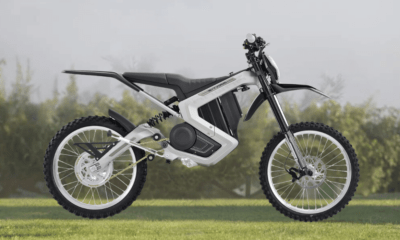
 Electric Dirt Bike For Adults2 years ago
Electric Dirt Bike For Adults2 years agoUnleashing the Power of the Rawrr Mantis: The Ultimate Electric Dirt Bike Experience














Warning: Undefined variable $user_ID in /home/u747774253/domains/electricdirtbikereviews.com/public_html/wp-content/themes/zox-news/comments.php on line 49
You must be logged in to post a comment Login